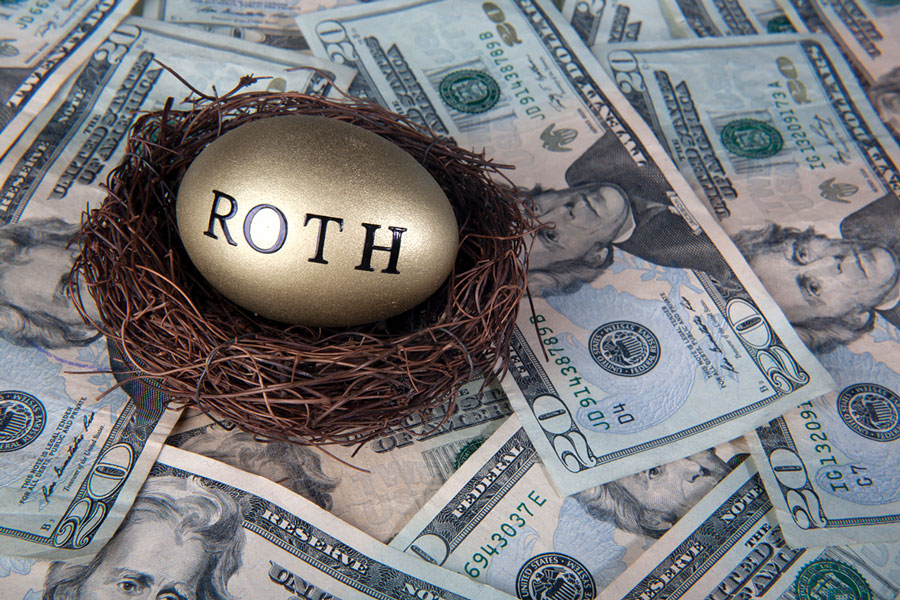

With the broad equity markets well into correction territory and pulling down the value of client portfolios, savvy financial advisers are flexing some value-add by steering clients’ attention toward Roth IRA conversions.
Because transferring assets from a traditional individual retirement account to a Roth IRA comes with a tax bill pegged to the size of the conversion, doing the transfer during a market pullback might seem like a no-brainer piece of financial advice, but there are always wrinkles to consider.
While the idea of not paying taxes down the road on withdrawals from a Roth might sound wonderful, the conversion does require paying taxes for the calendar year of the conversion, which might not be ideal for some clients.
“This is a great time to do a Roth conversion,” said Bradley Lineberger, president of Seaside Wealth Management.
“You convert when markets are down and you will pay less in taxes on the conversion or you can convert more for the same tax bill,” he said. “The ensuing market recovery will come in the tax-free bucket and will result in large tax savings in the future.”
Key to the conversions, however, is ensuring clients have enough liquidity to “fund the exchange” and understand how a conversion could impact their tax bracket, said Marianne Nolte, founder of Imagine Financial Services.
She said clients need to also consider other financial factors that could affect a taxable event during the year of the conversion, such as a new job, stock options or a real estate sale.
“Consider how many dollars can be converted to fill up the current tax bracket, but not push you into a higher bracket,” Nolte said.
While advisers have until April to manage the tax implications of a Roth conversion, the current focus is on the suddenly downsized client portfolios that would take some of the sting out of the tax hit. But that assumes tax management is the driving force behind the conversion.
“It would have to be a very special situation and it’s not just across the board for everyone,” said Tim Holsworth, president of AHP Financial.
For example, if clients plan on passing along the bulk of their IRA assets to beneficiaries, Holsworth advises keeping them in the traditional IRA wrapper and letting the heirs worry about the tax bill.
“Personally, I don’t care if my beneficiaries have to pay taxes,” he said. “If you get money from me and you have to pay taxes on it, that’s too damn bad.”
Holsworth said it’s also not a slam-dunk decision for clients who plan on tapping into IRAs in retirement because “converting to a Roth doesn’t come for free; you’re paying the taxes now.” Regarding the theory that taxes will be higher in the future and that it makes sense to pay them now, he points out the downside of paying taxes now with money that could have generated returns if left in the market.
While Holsworth believes there is value in using both Roth and traditional IRAs for retirement savings, he generally discourages conversions for clients who are closer to retirement.
Retirement planning specialist Ed Slott, president of Ed Slott and Co., is more of a perennial fan of Roth conversions, but he does agree that the issue is more about taxes than it is about converting when the market is down.
“It’s always a good time for a Roth conversion, but it’s a long-term proposition because you’re doing it now for tax purposes down the road,” he said. “Roth conversions are less about the market than they are about tax rates. Even if tax rates don’t go up, you’re sitting on a ticking tax time bomb” with a traditional IRA.
In terms of timing, Slott pointed out that the current tax-related risk is the 2026 expiration of tax cuts passed under President Donald Trump. He said one way to manage conversions until the current tax rates expire is through a series of conversions, which he describes as dollar cost averaging for tax purposes.
Bryan Minogue, founder of Kardinal Financial, agreed that taxes should lead the decision, but said there’s nothing wrong with taking advantage of a lower tax bill when it is presented.
Read next: How is Taxation Done on Roth Conversions?
“You can effectively convert more shares at a lower price during market downturns,” he said. “Corrections are excellent times to accelerate Roth conversion plans.”
However, Minogue said, it could be hard to pinpoint a client’s tax bracket with seven months still left in the year.
“The predictability, or lack thereof, of your income may make it difficult to know how much to convert,” he said. “To mitigate the risk, consider a partial Roth conversion today and revisit Roth conversions later in the year when the income and tax bracket is clearer.”
In terms of timing the conversion to the market lows, Minogue said clients should be prepared for potentially missing that mark.
“Depending on where your IRA is held, you may need to liquidate it in order to convert it to a Roth, and that could leave you out of the market for a few days or weeks,” he said, advising in-kind conversions when possible.

Relationships are key to our business but advisors are often slow to engage in specific activities designed to foster them.

Whichever path you go down, act now while you're still in control.

Pro-bitcoin professionals, however, say the cryptocurrency has ushered in change.

“LPL has evolved significantly over the last decade and still wants to scale up,” says one industry executive.

Survey findings from the Nationwide Retirement Institute offers pearls of planning wisdom from 60- to 65-year-olds, as well as insights into concerns.
Streamline your outreach with Aidentified's AI-driven solutions
This season’s market volatility: Positioning for rate relief, income growth and the AI rebound
